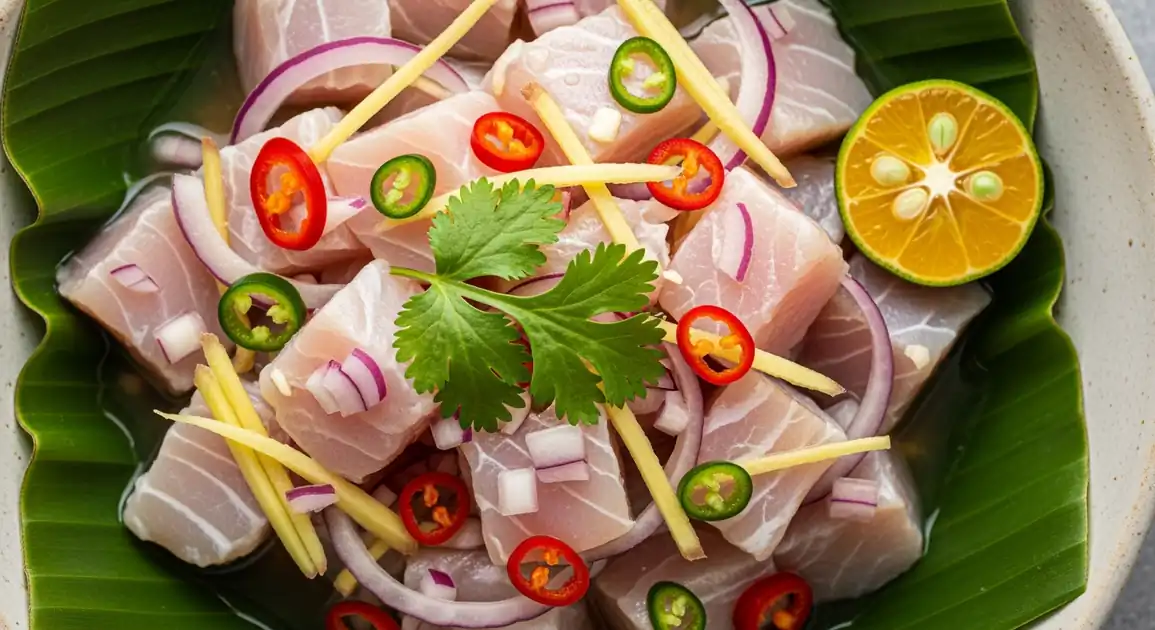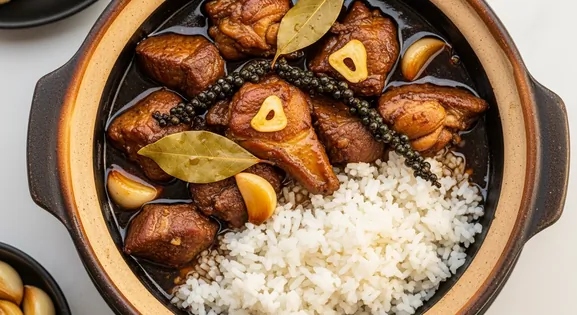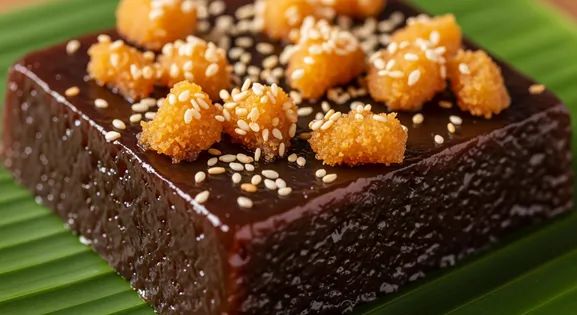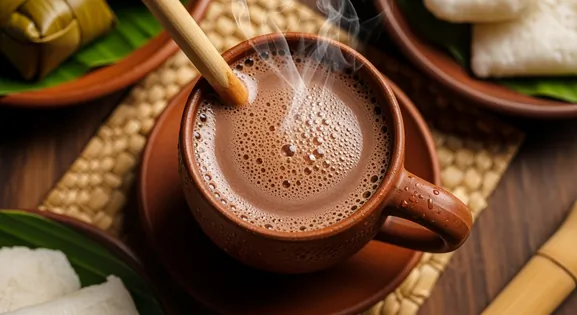Kinilaw in Philippines: A Complete Food Lover's Guide
Kinilaw

Understanding This Dish: An Introduction
Kinilaw is a traditional Filipino dish of raw fish or seafood marinated in vinegar and citrus juices (typically calamansi) until the acid denatures the proteins in a process similar to cooking. Enhanced with aromatics like ginger, onions, and chili peppers, this refreshing appetizer is beloved across the Philippines, especially in coastal regions where the freshest seafood is available.
A Traveler's Guide to Authenticity
What to Look For
-
Very fresh fish with clear eyes and firm flesh
Look for fish that smells clean and oceanic, never fishy. For whole fish, clear eyes, bright red gills, and firm flesh are key indicators.
-
Preparation to order or very recently prepared
Kinilaw should be made fresh. Its texture deteriorates if it sits too long in acid. Inquire about preparation time.
-
Proper refrigeration of raw ingredients
Fish should be kept on ice or in refrigeration until preparation, especially in hot weather.
-
Sufficient acid in the mixture
The marinade must contain enough vinegar and citrus juice to properly denature the fish proteins, ensuring it tastes noticeably tangy.
-
Clean preparation area
Surfaces, knives, and containers should be clean to prevent cross-contamination.
What to avoid
-
Pre-made kinilaw sitting at room temperature
Kinilaw shouldn't sit for hours, especially unrefrigerated. This can lead to rapid deterioration of quality.
-
Fish with a strong fishy smell or dull appearance
This indicates the fish isn't fresh. Fresh fish has minimal odor and appears vibrant.
-
Cloudy or slimy marinade
The liquid should be relatively clear to slightly milky (if coconut milk is added), never slimy or excessively cloudy.
-
Fish with discolored edges or brown spots
These are signs of deterioration or improper storage.
-
Cross-contamination concerns
Avoid places where raw fish is handled with the same utensils as cooked food without cleaning in between.
How to Order Kinilaw
The Perfect Accompaniments
Steamed Rice
Staple
Plain steamed white rice provides a neutral base that perfectly balances the kinilaw's intense acidity and spiciness, offering a comforting contrast to the vibrant flavors.
Cold Beer (San Miguel Pale Pilsen)
Beverage
A crisp, cold local beer offers a refreshing counterpoint to the kinilaw's rich flavors and helps to cleanse the palate between bites, especially with spicier versions.
Explore Kinilaw in Detail: City Guides
Discover where to find the best Kinilaw and learn local tips in these cities:
The Culinary Legend of Kinilaw
Kinilaw has ancient origins in the Philippines, predating Spanish colonization. Historical records suggest that early Filipinos were preparing raw fish with vinegar and native citruses before the 16th century. The technique of using acid to 'cook' fish developed independently in coastal communities as a practical way to preserve and enjoy fresh catches. Regional variations emerged over time, with some areas adding coconut milk or unique local ingredients.
How It Is Traditionally Made
Fresh fish (typically tuna, mackerel, or other firm white fish) is cleaned thoroughly and cut into uniform cubes. It's then marinated in a mixture of vinegar (often cane or coconut vinegar) and citrus juice (usually calamansi or lime) for a short period - just enough to 'cook' the exterior while maintaining tenderness. Ginger, onions, chili peppers, and sometimes coconut milk are added. The dish is prepared just before serving, as the fish continues to 'cook' in the acid and can become tough if left too long.
Key Ingredients of Kinilaw
Fresh Fish (e.g., Tuna, Tanigue)
The foundation of kinilaw, typically firm-fleshed white fish or tuna, must be impeccably fresh. The acid in the marinade 'cooks' the fish, transforming its texture and flavor.
Quality indicator: Look for fish with clear eyes, bright gills, and firm, resilient flesh that smells clean and oceanic, never fishy.
Vinegar (Suka)
Often cane vinegar or coconut vinegar, this is the primary acidic component that denatures the fish proteins. Its quality and type significantly influence the dish's overall tang and aroma.
Quality indicator: A good vinegar should have a clean, sharp acidity without harsh chemical notes, and be sourced from reputable local producers.
Calamansi Juice
A small, highly acidic citrus fruit native to the Philippines, calamansi adds a distinct bright, floral, and slightly sweet citrus note that complements the vinegar.
Quality indicator: Freshly squeezed calamansi juice is essential for its vibrant flavor; avoid bottled or concentrated versions.
Local Kinilaw Variations in Philippines
Tuna Kinilaw
Made with fresh tuna chunks, this version is popular in regions known for tuna fishing. The firm texture of tuna holds up well to the acid marinade.
Tanigue Kinilaw
Using Spanish mackerel, this version is common throughout the central and southern Philippines. The fish has a slightly stronger flavor than tuna.
Coconut Kinilaw
Includes coconut milk or cream for a richer, less acidic flavor profile, particularly popular in some island regions.
Spicy Kinilaw
Features additional local chili peppers like siling labuyo for heat. Spice levels vary by region and personal preference.
Dietary Information
Dietary Information
Important Note for Travelers: Your safety is our priority. Below are the common allergens associated with the traditional preparation of this dish. However, recipes and ingredients can vary significantly between establishments. Always confirm all ingredients directly with the food vendor before ordering, especially if you have a severe allergy.
Potential Allergens
Dietary Suitability
Frequently Asked Questions about Kinilaw
What is Kinilaw?
Kinilaw is a Filipino dish of raw fish or seafood 'cooked' in vinegar and acidic fruit juices (typically calamansi or lime). The acid denatures the protein. It's mixed with aromatics like onions, ginger, chili, and sometimes coconut milk. Often called Filipino ceviche, its preparation predates Spanish colonial influence.
Is Kinilaw a good choice for me?
Kinilaw can be a good choice when prepared with very fresh fish and sufficient acid. Look for establishments with high seafood turnover and proper refrigeration. While vinegar and citrus acids help, travelers should always prioritize vendors demonstrating excellent hygiene and fresh ingredients. Making smart choices about where you eat is key to enjoying raw seafood dishes.
What kind of fish is used in Kinilaw?
The best kinilaw uses fresh, firm-fleshed fish like tuna (e.g., yellowfin, skipjack), tanigue (Spanish mackerel), or lapu-lapu (grouper). Coastal areas feature locally-available fish. Some variations use shellfish, shrimp, squid, or even vegetables instead of fish.
How can I tell if Kinilaw is fresh?
Fresh kinilaw should have vibrant fish chunks (not dull or discolored) with a clean, ocean scent. The fish should be firm, not mushy, and the marinade clear. It should be prepared just before serving, as it deteriorates quickly. Ask when the fish was delivered – same day is ideal.
Is Kinilaw the same as ceviche?
While similar, kinilaw differs from Latin American ceviche. Kinilaw typically uses vinegar (cane or coconut) in addition to citrus, while ceviche primarily uses citrus. Kinilaw often incorporates Filipino ingredients like calamansi and local chilis. Historians suggest the Filipino technique predates Spanish colonial contact.
Can I get Kinilaw without spice?
Yes, you can request kinilaw without chili peppers ("Hindi maanghang" or "No spice please"). The core flavors of kinilaw come from the acidity of vinegar and citrus, along with aromatics like ginger and onion, so it remains flavorful without heat. Many establishments prepare the chili separately or to order to accommodate different spice preferences.
Expert How-To Guides about Kinilaw
How to Spot a Good Kinilaw Vendor
Identify quality kinilaw vendors by observing key indicators for freshness and preparation, ensuring a safe and delicious experience.
- Check for high seafood turnover - busier places mean fresher fish.
- Look for vendors who prepare kinilaw to order rather than having it pre-made.
- Observe if the fish is stored properly - kept on ice or refrigerated before preparation.
- Vendors who also sell other fresh seafood dishes likely have good sourcing.
- Ask when the fish was delivered - same day is ideal.
- Watch the preparation if possible - sufficient acid (vinegar and citrus) should be used.
- Notice if locals frequent the place - often the best indicator of quality and freshness.
How to Eat Kinilaw Like a Local
Learn to enjoy this vibrant Filipino delicacy the authentic way with these cultural tips for a truly local experience.
- Kinilaw is traditionally eaten as a 'pulutan' (appetizer) or side dish, often with beer or other alcoholic drinks.
- Use a fork to eat, but many locals enjoy it with their hands alongside rice.
- Take a small portion first to test the flavor and spice level - you can always add more chili later.
- Appreciate the balanced flavors - the sourness should be prominent but not overwhelming.
- Eat it immediately after serving - kinilaw is not meant to sit for long periods.
- Try a piece of fish followed by some of the onions and other aromatics for the full flavor experience.
- If coconut milk is included, mix well before eating as it adds creaminess to balance the acidity.
How to Judge Kinilaw Quality
Master the art of identifying the hallmarks of excellent kinilaw, ensuring a delicious and authentic experience.
- Fish chunks should be uniform in size for even 'cooking' in the acid.
- The fish should appear slightly opaque on the outside but still moist (not dry).
- There should be no overly fishy smell - just fresh ocean scent with vinegar and spices.
- The marinade should look vibrant with visible specks of chili, ginger, and herbs.
- Good kinilaw has balanced acidity - enough to 'cook' the fish but not overwhelmingly sour.
- The fish should be firm, not mushy or falling apart.
- When in doubt, ask how long ago it was prepared - the fresher, the better.
Our Commitment to Quality
At Tasteplorers, our mission is to provide the most accurate and useful travel information in the world. To achieve this, all content on this site is created through our unique editorial framework. We utilize leading AI research tools, guided by our proprietary prompts, and a multi-stage validation process. This entire system is overseen by our editorial team to ensure everything we publish meets our high standards for accuracy, cultural nuance, and practical value for travelers.
Learn more about our Editorial Process and our Mission.
Countries
Explore regions
Europe
Discover Europe's diverse culinary landscape, from Mediterranean flavors to hearty Alpine fare. Learn to navigate markets, decode menus, and eat like a local.
Latin America & Caribbean
Discover the vibrant cuisines of Latin America & the Caribbean. Our expert guide covers everything from Mexican street food to Peruvian ceviche and market tips.
Oceania
Explore Oceania's diverse food scene. Learn about Polynesian earth ovens, Fijian feasts, and the vibrant café culture of Australia and New Zealand.
Southeast Asia
Explore Southeast Asia's diverse food cultures from Thailand to Vietnam. Get expert tips on navigating spice levels, choosing quality vendors, and understanding the rich traditions of the region.








